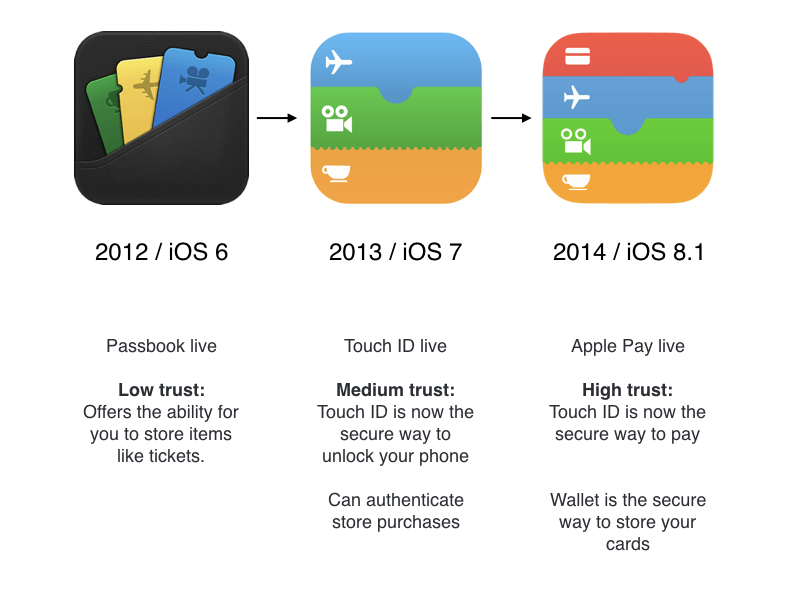When I meet product experts, they almost always say they rely on data and analytics to give them the hard evidence needed to build their product. That’s the wrong approach.
A few years back, I was working with some pretty amazing product minds at Beats Music, the music company from Beats By Dre that evolved into Apple Music. We set out with the ambitious goal of creating a household name product — a universally loved experience — and bringing it to life all at once on launch day. Our point of view drove our product design, infusing itself into every creative decision.
As clear as our vision was, the chaos of a new company still dictated our world. Deadlines (and the music business) wreaked havoc on our creative expression and left us with many tough choices.
Until Beats, my answer to making a difficult design choice was simple — rely on data. Find any data that could make the decision easier, and use it. We had little tether to any external users or data. We had to rely on our vision, our strategy, and our experience and taste.
We had a lot of decisions to make. Considering the team was a such a powerhouse, it felt completely right to depend on our taste and instinct. Everything I learned about ‘product’ clearly emphasized the need for data-driven decision-making. Without that cradle of data, I began to question my ability to rely on empathy and taste to make decisions. I had no framework, no science to understand the art of what we were doing.
These decisions started to stack, and so did my anxiety.
On one particular morning, I had a set of complex, interwoven product designs to work through all at once. Which messaging is best? What’s our organizing principle? How do we handle input & response?
I couldn’t parse them all. My compass felt very unsteady.
I decided to start over and storyboard the entire experience again — from the first moment our listener learned about us until the moment they made the emotional decision of whether to trust us with their music. I put my headphones on and went to a three-sided, whiteboard-walled closet and began drawing. My co-workers said I looked crazy. They were right.
About an hour in, I realized I was looking at the story of our listeners. And it clicked.
We can make confident, vision-driven decisions in the absence of data by applying the principles of narrative storytelling to the experience. This is why Jimmy Iovine, Trent Reznor, and the Beats team were so brilliant — they empowered us to see our product as an emotional, cultural experience.
Our ‘product’ was not a piece of technology or app or site – it was the sum of every experience our audience has with the promise we make to them.
We must create a story that clearly expresses that promise, builds trust in it with every experience, and reduces cognitive load to effortlessly guide the audience to it. If we rely entirely on analytics, our story will feel cold.
After we sold Beats to Apple, I saw the clearest example of this framework in action — Apple Pay. The team used a multi-year, staged story to built trust with each iteration.

The feasibility of contactless payments was not sufficient for audience adoption — trust in the behavior needed to be built.
Now as I am investing at Floodgate, my belief has deepened further. I’ve had a chance to work with and invest in the world’s finest founders — the prime movers of technology — and what they build all seems to share the same approach. The best, most impactful, and most successful products use storytelling to speak to a wide swath of humanity at an emotional level. When I work with founders, I focus on discovering and crafting their story. Each piece of a meaningful company — product, culture, marketing, sales — can be expressed narratively and emotionally. I seek to unlock the raw creative power of the team by providing a different lens to see their work.
I find that we live in an environment of deep, analytical focus on agility when designing products and experiences. We’ve over rotated, and we need a framework — contrary to the prevailing mode of data-driven products — that can open us up to new ways of thinking about product design.
Clear, crisp storytelling can comfortably guide any audience to your promise. It is the base of the best product design work I’ve seen, and a framework I use every day to make decisions on what new companies to invest in at Floodgate.
In my posts here at Products That Count, I’m going to explore these ideas with you. Until then, feel free to reach out — @localbyproxy on Twitter or join our Secret Weapons email list.
Thank you to SC Moatti, Sarah Imbert, Andy Sparks, Joshua Levy, and Marissa Gemma for their kind edits.
About the Author
Ryan Walsh is a Partner at Floodgate, where he leads early stage investments in technology companies. A student of great products and how they impact culture, his focus areas include media, AR, marketplaces, subscription businesses, and products that include unique network effects and social psychology.
Prior to Floodgate, Ryan directed product management for media at Apple, including Apple Music and the iTunes stores for movies, music, and television. He joined Apple as part of the Beats by Dre acquisition, where he was Vice President of Product, managing design, product development, analytics, and growth. Prior to working with Beats, Ryan spent 15 years starting ventures, creating community or helping others do the same.
Ryan actively performs improvisational theater and is a noted storyteller. He has produced and deejayed electronic music for over 15 years under an alias.